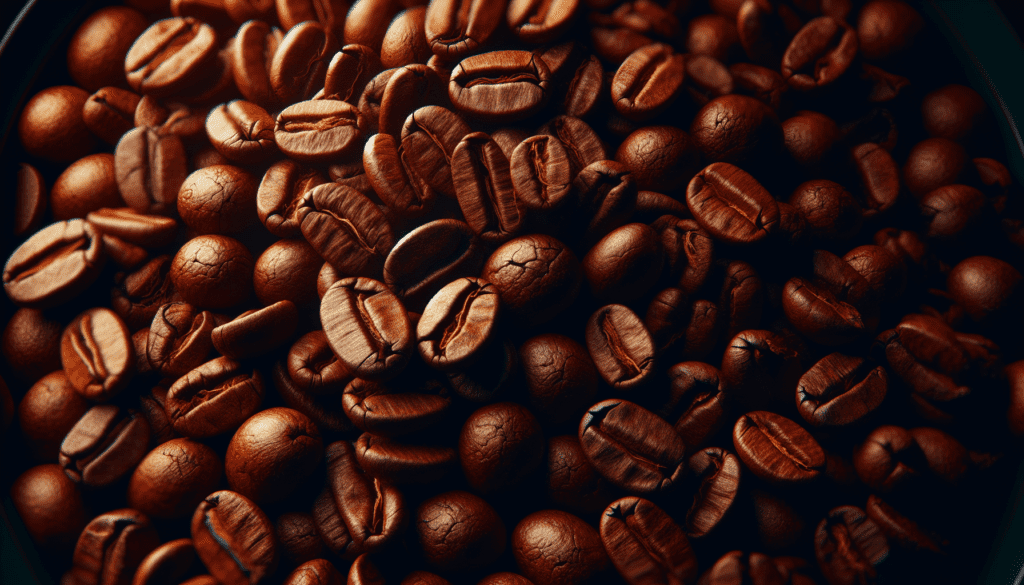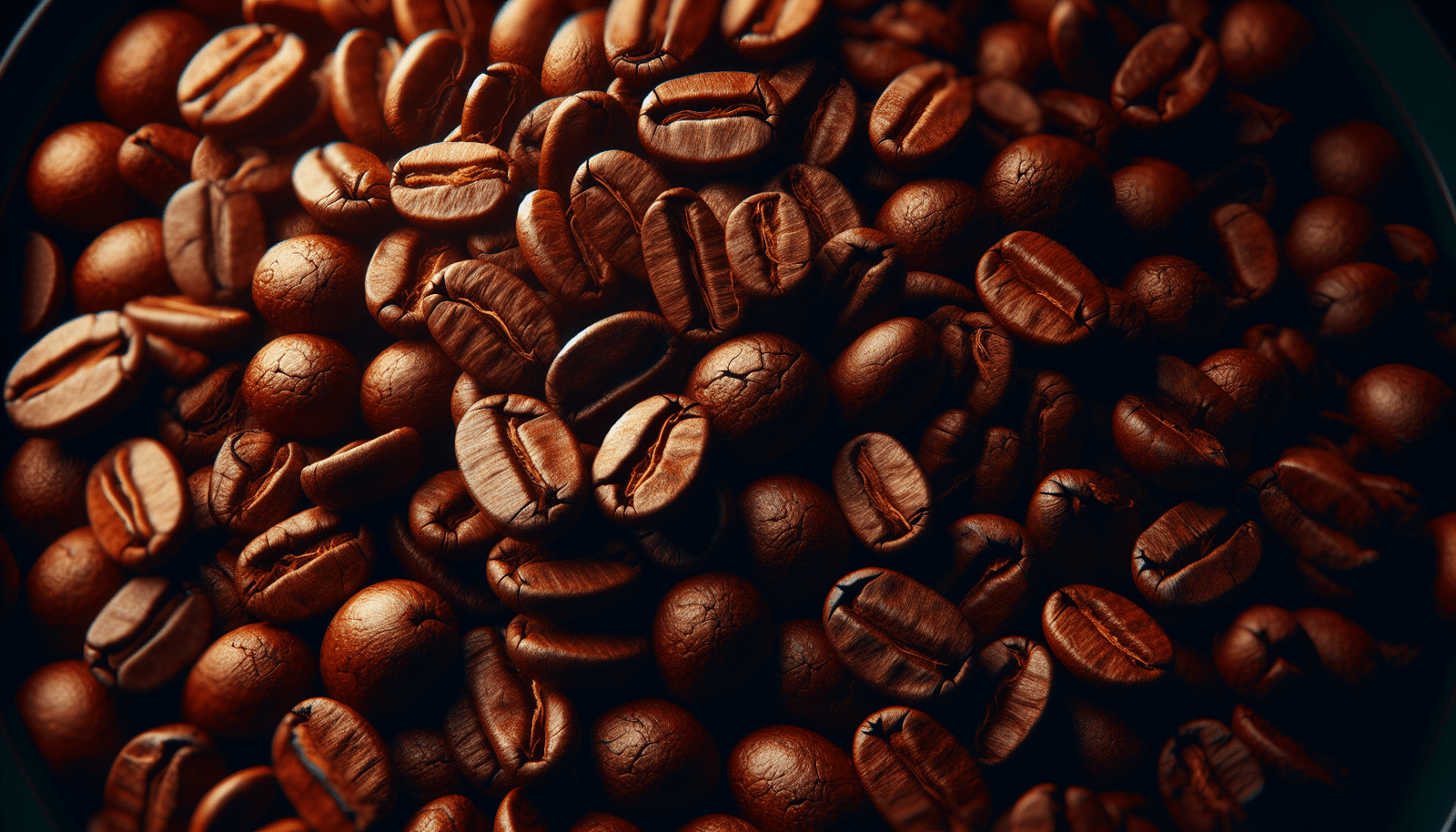Coffee beans are more than just a morning pick-me-up; they are the essence of the caffeinated world. With their various forms and flavors, coffee beans offer a delightful journey for enthusiasts and newcomers alike. From the best coffee beans for espresso to the intriguing concept of chocolate-covered coffee beans, there is something for everyone. But have you ever wondered where coffee beans come from? Their origins range from the lush fields of Colombia to the exotic Kona coffee beans of Hawaii, each bringing its unique taste profile. Whether you prefer decaf or the boldness of arabica, understanding how to store and extend their shelf life is crucial. And for the curious minds, we will even touch upon the fascinating process of civet coffee. So, whether you roast your coffee beans at home or opt for the gourmet world of flavored coffee beans, we will help you discover the perfect beans for your preferred brew method. Let’s embark on a journey through the captivating world of ground coffee beans.
Types of Ground Coffee Beans
Arabica
Arabica coffee beans are known for their superior quality and delicate flavor. They are grown at higher altitudes, which contributes to their complex and nuanced taste. Arabica beans have a lower caffeine content compared to other varieties, making them a favorite among those who prefer a milder coffee experience. They are often described as having a sweet, fruity, and floral aroma, with notes of chocolate, caramel, and nuts in the flavor profile.
Robusta
Robusta coffee beans are known for their strong and bold flavor. They have a higher caffeine content than Arabica beans, making them a popular choice for those who crave a caffeine kick in their coffee. Robusta beans are more resistant to diseases and pests, making them easier to cultivate. They are often described as having a bitter and earthy taste, with hints of dark chocolate and spices.
Blend
Coffee blends are created by combining different types of beans to create a unique and balanced flavor profile. Blends often consist of a mixture of Arabica and Robusta beans, with the proportions varying depending on the desired taste. Blends can combine the best qualities of different beans, creating a well-rounded and satisfying cup of coffee.
Roasting Process
Light Roast
Light roast coffee beans are roasted for a shorter period of time, resulting in a lighter color and a milder flavor. Light roast beans retain more of their natural flavors and characteristics compared to darker roasts. They have a higher acidity level and are often described as having a bright and crisp taste with floral and fruity notes.
Medium Roast
Medium roast coffee beans are roasted for a slightly longer period of time, resulting in a medium brown color and a fuller flavor profile. Medium roast beans have a balanced acidity level and a more pronounced sweetness. They are often described as having a smooth and well-rounded taste, with notes of chocolate, caramel, and nuts.
Dark Roast
Dark roast coffee beans are roasted for an extended period of time, resulting in a dark brown color and a bold and robust flavor. Dark roast beans have a lower acidity level and a deeper, smoky taste. They are often described as having a rich and intense flavor, with notes of dark chocolate, toasted nuts, and caramelized sugars.

Grind Size
Coarse Grind
Coarse grind coffee beans are ground into larger particles, resembling rough sand. This grind size is commonly used for brewing methods that have longer steeping times, such as French press and cold brew. The larger particles allow for a slower extraction process, resulting in a more balanced and less bitter cup of coffee.
Medium Grind
Medium grind coffee beans are ground into particles that are similar in size to granulated sugar. This grind size is versatile and can be used for various brewing methods, including drip brewing and pour-over. The medium particles provide a balance between extraction speed and flavor, resulting in a well-rounded cup of coffee.
Fine Grind
Fine grind coffee beans are ground into smaller particles, resembling table salt. This grind size is commonly used for brewing methods that have shorter brew times, such as espresso. The smaller particles allow for a quick and efficient extraction, resulting in a concentrated and intense cup of coffee.
Methods of Grinding Coffee Beans
Blade Grinders
Blade grinders are the most common type of coffee grinders. They consist of a spinning blade that chops the coffee beans into smaller pieces. Blade grinders are often more affordable and easy to use, but they can produce inconsistent grind sizes. It’s important to pulse the grinder and shake it to ensure an even grind.
Burr Grinders
Burr grinders are considered the gold standard for coffee grinding. They consist of two revolving abrasive surfaces (burrs) that crush the coffee beans into a consistent grind size. Burr grinders offer more control over the grind size and produce a more uniform grind. They are available in both manual and electric versions.

Factors Affecting Coffee Bean Flavor
Origin
The origin of the coffee beans plays a crucial role in determining their flavor profile. Different regions around the world have distinct growing conditions and soil compositions, which can impart unique flavors to the beans. For example, beans from Colombia are known for their balanced acidity and fruity notes, while beans from Ethiopia often exhibit floral and citrus flavors.
Altitude
The altitude at which coffee beans are grown can have a significant impact on their flavor. Higher-altitude regions tend to have cooler temperatures and more challenging growing conditions, which can result in slower maturation and denser beans. These beans often have a brighter acidity and more complex flavors compared to beans grown at lower altitudes.
Processing
The processing method used to remove the coffee beans from the cherries also affects their flavor. There are three main processing methods: washed, natural, and honey process. Washed beans generally have a cleaner and brighter taste, while natural beans have a heavier body and fruitier flavors. Honey-processed beans fall somewhere in between, offering a balance of sweetness and acidity.
Storage
The way coffee beans are stored after roasting can greatly impact their flavor. Exposure to air, light, moisture, and heat can cause the beans to go stale and lose their aroma and taste. It’s important to store coffee beans in a cool, dry, and airtight container to preserve their freshness. Avoid storing them in the refrigerator or freezer, as they can absorb odors and moisture.
Storage and Shelf Life of Ground Coffee Beans
Proper Storage Conditions
To maintain the freshness of ground coffee beans, it’s crucial to store them in the right conditions. The beans should be kept in an airtight container, preferably in a cool and dark place. Avoid storing them near strong-smelling substances, as coffee is prone to taking on odors. It’s also important to use the beans within a reasonable amount of time, as they may start to lose their flavor and aroma over time.
Optimal Shelf Life
Ground coffee beans have a limited shelf life compared to whole beans. On average, ground coffee can maintain its freshness for about two weeks after opening the package. However, the flavor and aroma may start to deteriorate after the first week. It’s best to buy smaller quantities of ground coffee to ensure that you consume it within its optimal shelf life.
Brewing Methods
Pour Over
Pour over is a brewing method that involves pouring hot water over coffee grounds in a filter. It allows for precise control over the extraction process, resulting in a clean and flavorful cup of coffee. Pour over is loved for its ability to showcase the nuances of different coffee beans and highlight their unique flavors.
French Press
French press is a classic brewing method that involves steeping coarsely ground coffee in hot water and then pressing a plunger to separate the coffee grounds from the liquid. This method produces a full-bodied and rich cup of coffee with a more pronounced flavor compared to other brewing methods.
Espresso
Espresso is a concentrated form of coffee that is brewed using high pressure. It requires finely ground coffee and a specialized espresso machine. Espresso shots are known for their strong and bold flavor, with a thick and creamy layer of foam on top.
Cold Brew
Cold brew is a method of brewing coffee using cold or room temperature water over an extended period of time. This slow extraction process produces a smooth and mellow cup of coffee with less acidity and bitterness. Cold brew is often served over ice and is popular during hot summer months.
Aeropress
Aeropress is a versatile brewing method that combines immersion and pressure to extract coffee. It involves placing coffee grounds in a chamber, adding hot water, and pressing the mixture through a filter using air pressure. Aeropress can produce a clean and vibrant cup of coffee with a wide range of flavor profiles.
Flavored Ground Coffee Beans
Popular Flavors
Flavored ground coffee beans offer a wide range of options for those who prefer a little extra flavor in their cup of joe. Some popular flavored coffees include vanilla, caramel, hazelnut, and cinnamon. These flavors can complement the natural taste of coffee, adding a touch of sweetness and depth.
Creation Process
Flavored ground coffee beans are created by infusing the beans with natural or artificial flavors. The beans are often coated or soaked in flavoring agents, allowing the flavors to penetrate the beans. The length of the infusion process can vary, depending on the desired intensity of the flavor. After the flavoring process, the beans are dried and roasted to perfection.
Decaffeinated Ground Coffee Beans
Decaffeination Methods
Decaffeinated ground coffee beans are created through the removal of caffeine from the beans. There are several methods used to decaffeinate coffee, including the Swiss Water Process, the Direct Method, and the Indirect Method. These methods involve either using water, solvents, or carbon dioxide to extract the caffeine from the beans while preserving the flavor.
Flavor Profile
Decaffeinated coffee beans generally have a milder flavor compared to their caffeinated counterparts. The decaffeination process can impact the flavor profile of the beans, resulting in a slightly different taste. However, advancements in decaffeination techniques have improved the quality and taste of decaf coffee, making it a viable option for those who want to reduce their caffeine intake.
Freezing Ground Coffee Beans
Benefits of Freezing
Freezing ground coffee beans can help extend their shelf life and preserve their freshness. By freezing the beans, you can slow down the oxidation process and maintain the flavor and aroma for a longer period of time. Freezing is especially useful when you have a surplus of coffee or want to stock up on your favorite beans.
Proper Freezing Techniques
To freeze ground coffee beans properly, it’s important to divide them into smaller portions and place them in airtight containers or freezer bags. By doing so, you can preserve the freshness of each portion and prevent the beans from absorbing odors or moisture from the freezer. When you want to use the frozen coffee, simply remove the desired portion and let it come to room temperature before brewing. Avoid refreezing thawed coffee, as it can affect the flavor and quality.

